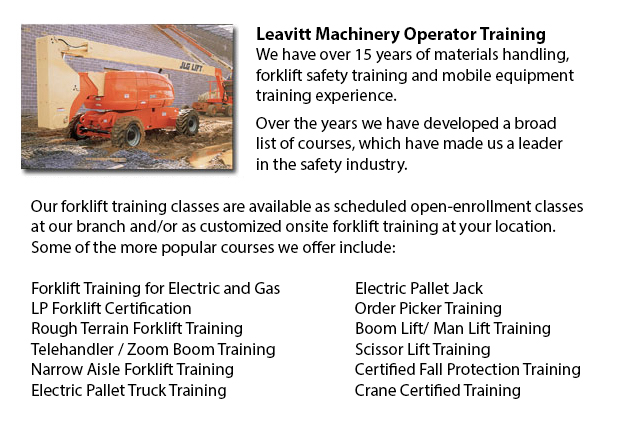
Aerial Lift Safety Training Prince Albert - There are approximately 26 to 30 construction fatalities within North America due to the utilization of aerial lifts. Nearly all of those killed are craftsmen like for example electrical workers, laborers, painters, carpenters or ironworkers. Most deaths are caused by tip-overs, electrocutions and falls. The greatest hazard is from boom-supported lifts, such as cherry pickers and bucket trucks. Most fatalities are related to this particular kind of lift, with the rest involving scissor lifts. Other dangers consist of being thrown out of a bucket, being struck by falling things, and being caught between the guardrail or lift bucket and an object, such as a joist or steel beam.
The safe operation of an aerial lift needs a check on the following things before making use of the device: operating and emergency controls, personal fall protection gear, safety devices, and tires and wheels. Inspect for possible leaks in the air, hydraulic fluid and fuel-system. Inspect the device for missing or loose parts.
The location where the device will be utilized must be thoroughly inspected for potential hazards, like for example bumps, holes, debris and drop-offs. Overhead power lines must be avoided or closely monitored. It is suggested that aerial lift devices be utilized on level, stable surfaces. Do not work on steep slopes that go beyond slope limitations specified by the manufacturer. Even on a level slope, wheel chocks, outriggers and brakes must be set.
Employers are required to provide maintenance mechanics and aerial lift operators with the correct guidebooks. Mechanics and operators must be trained by a licensed person experienced with the relevant type of aerial lift.
Aerial Lift Safety Tips:
o Close doors or lift platform chains before operating.
o Do not climb on or lean over guardrails. Stand on the platform or floor of the bucket.
o Make use of the provided manufacturer's load-capacity restrictions.
o When working near traffic, make use of correct work-zone warnings, like cones and signs.
If proper procedures are followed, electrocutions are avoidable. Stay at least ten feet away from any power lines and certified electricians should insulate and/or de-energize power lines. Workers have to use personal protective equipment and tools, like for instance insulated bucket. Nonetheless, an insulated bucket does not protect from electrocution if, for instance, the person working touches a different wire providing a path to the ground.
Falls are avoidable if the person working remains secure within guardrails or inside the bucket by using a full-body harness or a positioning device. If there is an anchorage within the bucket, a positioning belt with a short lanyard is adequate.
By following the manufacturer's instructions, tip-overs could be avoided. Never drive the lift platform when it is elevated, unless the manufacturer specifies otherwise. Adhere to the vertical and horizontal reach limitations of the device, and never go beyond the specified load-capacity.
-
Zoom Boom Training Prince Albert
Zoom Boom Training Prince Albert - Zoom Boom Training focuses on correctly training potential operators on variable reach forklifts. The training objectives include gaining the understanding of the machine's physics and to be able to define the job o... More -
Bucket Truck Training Prince Albert
Bucket Truck Training Prince Albert - The Vehicle-Mounted Aerial Work Platform or also called bucket truck training program is intended to reduce the chance of incident and personal injury when working with or in close proximity to bucket trucks by e... More -
Aerial Lift Training Prince Albert
Aerial Lift Training Prince Albert - An aerial work platform is a mechanized access platform. This device provides access to otherwise not accessible places for people or equipment. Likewise called an aerial device or elevating work platform, the mac... More -
Overhead Crane Ticket Prince Albert
Overhead Crane Ticket Prince Albert - The overhead crane is a common heavy machinery utilized in industrial settings. This particular machine is known as a bridge crane and comprises parallel runways spanned by a traveling bridge. The hoist is the co... More -
Scissor Lift Ticket Prince Albert
Scissor Lift Ticket Prince Albert - Scissor lifts have greatly benefited construction operations because the task that used to need a lot of effort and lots of people, can now be accomplished using the scissor lift and just one individual, the operat... More -
Manlift Training Prince Albert
Manlift Training Prince Albert - Different manlift training programs include the review and content of manlift devices. An essential part of the program is the practicum where students demonstrate their knowledge and practical ability to operate the... More -
Skid Steer Loader Training in Prince Albert
The engine powered skid-steer loader consists of a rigid and small frame, equipped along with lift arms which could attach to various industrial attachments and tools to be able to perform various labor saving tasks. Normally, skid-steer loaders are... More -
Crane Training School Prince Albert
Crane Training School Prince Albert - We provide industry relevant programs in our crane training school. The course will provide our trainees with learning outcomes matching the existing industry demands. Our small class sizes combine theory and han... More

Forklift Training Prince Albert
TOLL FREE: 1-888-254-6157
Prince Albert, Saskatchewan
forklifttrainingprincealbert.com
Email Us
About Us


